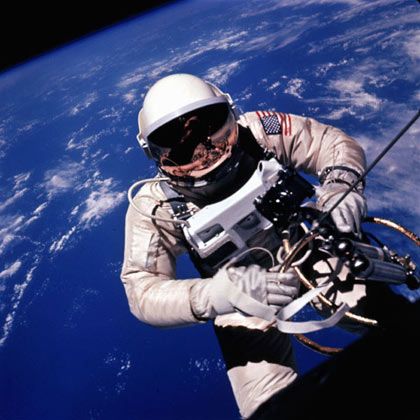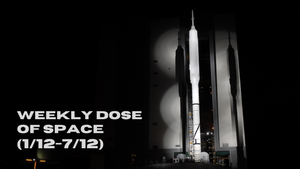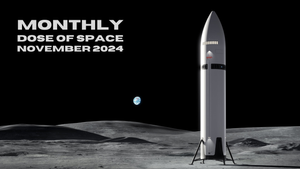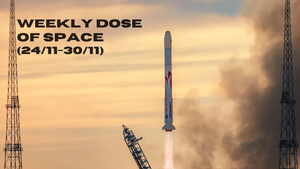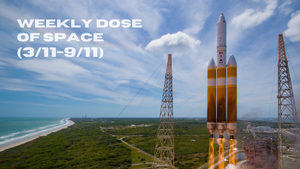
Weekly Dose of Space (3/11-9/11)
Welcome back to Weekly Dose of Space! This week had seven orbital launches occur, with the majority being Falcon 9. News this week had China's previous human spaceflight mission end and SpaceX's Cargo Dragon spacecraft boosting the International Space Station's orbit. As always, we'll also look ahead to what the worldwide launch schedule might look like next week.
SpaceX
This week at Starbase has been a quiet one, with hardware for future launch infrastructure and vehicles largely staying out of sight. However SpaceX did announce this week that the sixth flight test would launch on November 18th, a littler over a week from now. The vehicles for that next flight are believed to be Ship 31 and Booster 13.
Starship’s fifth flight test was a seminal moment in iterating towards a fully and rapidly reusable launch system.
— SpaceX (@SpaceX) November 6, 2024
Next up: the sixth flight test of Starship is targeted to launch as early as Monday, November 18 → https://t.co/oIFc3u9laE pic.twitter.com/5496ApNHkA
The announcement of flight six's launch date and recap of the previous flight test, via SpaceX on X.
Launches This Week
November 4th - H3 with DSN-3
A H3 rocket lifted off from the Tanegashima Space Center carrying the DSN-3, also called Kirameki 3, satellite to a geostationary transfer orbit. The satellite will be used for Japanese military communications.

November 4th - Soyuz 2.1b with Ionosfera-M 1 & 2
A Soyuz 2.1b lifted off from the Vostochny Cosmodrome carrying two Ionosfera-M satellites to sun-synchronous orbit. The Ionosfera-M satellites are part of a small constellation for ionospheric and magnetospheric research.
November 5th - Falcon 9 with CRS-31
SpaceX began its thirty-first cargo resupply mission to the International Space Station on November 5th. This mission is delivering 2,762 kilograms of cargo and performing a reboost test. More details about this mission are available here.

November 5th - Electron for 'Changes in Latitudes, Changes In Attitudes'
Rocket Lab's Electron rocket lifted off from Launch Complex 1B, on the Māhia Peninsula in New Zealand, and headed to a sun-synchronous orbit. Aboard Electron was one satellite that is rumored to be owned by E-Space.
Up, up and away for the 54th time 🚀 pic.twitter.com/1vMHPRbEuc
— Rocket Lab (@RocketLab) November 6, 2024
Electron lifting off from Launch Complex 1B on November 5th, via Rocket Lab on X.
November 7th - Falcon 9 with Starlink Group 6-77
Twenty-three Starlink satellites were delivered to low Earth orbit atop of a Falcon 9 flying from Space Launch Complex 40, in Florida. The booster supporting this mission was B1085, making its third flight and landing downrange on the drone ship 'Just Read The Instructions'.

November 9th - Long March 2C with four PIESAT-2 satellites
A Long March 2C lifted off from Launch Area 4 at Jiuquan Satellite Launch Center carrying four PIESAT-2 satellites to a sun-synchronous orbit. The PIESAT-2 satellites are X-band synthetic aperture radar imaging spacecraft, as part of a potential constellation of sixteen.

November 9th - Falcon 9 with Starlink Group 9-10
Another Falcon 9 lifted off from Space Launch Complex 4E, in California, carrying twenty Starlink satellites to low Earth orbit. Supporting this mission was booster B1081 on its eleventh flight, and landing on the drone ship 'Of Course I Still Love You' downrange.

In Other Space News
Dragon boosts the International Space Station

SpaceX's Cargo Dragon V2 spacecraft performed its first reboost of the International Space Station, on November 8th, as part of the CRS-31 mission. The first reboost was part of a test of hardware and systems to inform the development of the U.S. Deorbit Vehicle, and lasted twelve and a half minutes.
According to NASA, the reboost changed the altitude of the station by 7/100 of a mile at the lowest point in its orbit and 7/10 of a mile at the lowest point in the orbit. The average orbit of the International Space Station is now approximately five hundred meters higher.
With a successful test this week, NASA may contract SpaceX to periodically reboost the International Space Station during future Crew or Cargo Dragon missions. Currently, only Northrop Grumman's Cygnus and Roscosmos' Progress vehicles have the capability to reboost the station. To maintain its orbit, the station requires reboost burns a few times each year.
Shenzhou-18 crew return to Earth

On November 3rd, the Shenzhou-18 mission came to an end as the spacecraft reentry capsule touched down at 17:24 pm Universal Coordinated Time at the Dongfeng Landing Site, within the Gobi Desert in the Inner Mongolia Autonomous Region.
As with all six-month missions to the Tiangong Space Station, three crew were onboard and were: Commander Ye Guangfu (叶光富), Operator Li Cong (李聪), and System Operator Li Guangsu (李广苏). Li Cong and Li Guangsu were both flying to space for the first time, and Ye Guangfu was in space for the second time.
In a first for China's human spaceflight program, Ye Guangfu has become the first taikonaut to spend over a year in space, with a total of 374.5 days. Ye will hold his record for China's astronaut core for at least six months as Cai Xuzhe (蔡旭哲), of the Shenzhou-19 mission, is currently aboard the Tiangong Space Station for six months and already has spent 182 days in orbit.
What to Expect Next Week
Starbase
SpaceX is targeting the sixth flight test of its Starship-Super Heavy launch vehicle no earlier than November 18th. This flight test will utilize Ship 31 and Super Heavy Booster 13 to repeat the booster catch and possibly perform an in-space Raptor relight.
November 10th - Falcon 9 with Starlink Group 6-69
SpaceX is expecting to launch another batch of Starlink satellites to low Earth orbit from Space Launch Complex 40.
November 11th - Kinetica-1 with fifteen payloads
CAS Space's Kinetica-1 launch vehicle is expected to launch from Launch Site 130 at the Jiuquan Satellite Launch Center carrying fifteen payloads to sun-synchronous orbit.
November 11th - Falcon 9 with Koreasat-6A
Koreasat-6A is expecting to be delivered to a geostationary transfer orbit by a Falcon 9 flying from Launch Complex 39A, in Florida.
November 13th - Falcon 9 with Starlink Group 6-68
Another batch of Starlink satellites are expecting to be delivered to low Earth orbit by a Falcon 9 from Space Launch Complex 40.
November 13th - Long March 4C with a to-be-confirmed payload
A Long March 4C is believed to be launching from the Taiyuan Satellite Launch Center carrying an unknown payload.
November 14th - Starlink Group 9-11
Yet another batch of Starlink satellites are planned to be launch from Space Launch Complex 4E atop of a Falcon 9.

